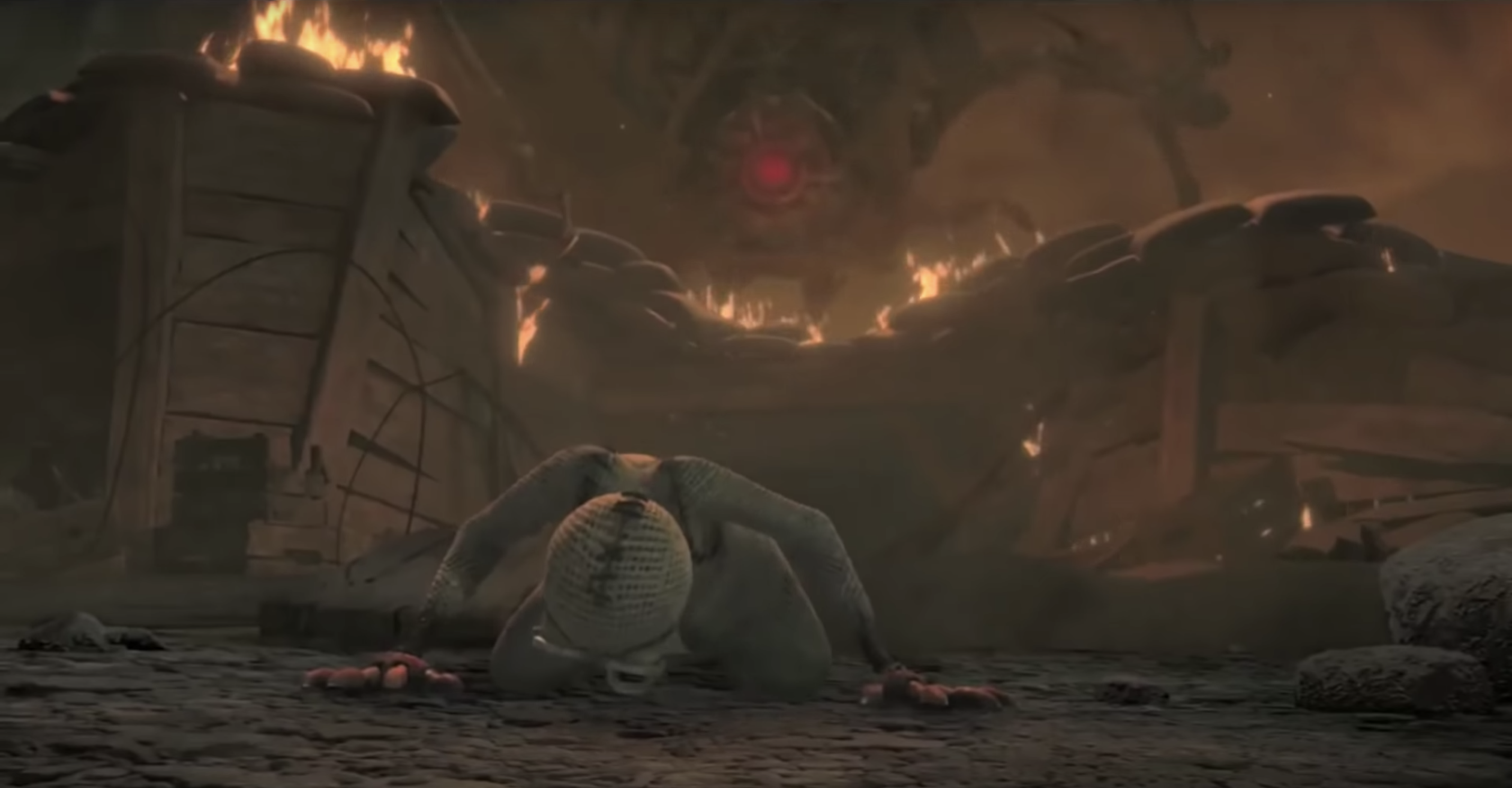

On September 9, 2009, Focus Features released the film 9, directed by Shane Acker and produced by Tim Burton. Originally, 9 was a short film produced by Acker in his days at UCLA, even getting nominated for an Oscar in 2006. It is still the only adult animated film released by Universal Pictures (under Focus Features) to date. The week it debuted, 9 had to compete with Tyler Perry’s I Can Do Bad All by Myself and came in second at the box office, grossing $48,428,063 worldwide. It won the award for Best Art Direction from the Washington D.C. Area Film Critics Association and was nominated for five others.
Anyone who saw this film 10 years ago most likely remembers 9 for its stunning visuals. The film’s style is similar to Tim Burton’s The Nightmare Before Christmas: a somber atmosphere filled with anomalies. The film’s strength lies in its imaginative design. Acker’s stitchpunk rag dolls literally come to life on the screen. You can even see the thread count in their stitching. Each motion is fluid, from the way they walk to how their mouths move when they speak. The setting appears to take place in Luxemburg, Germany, judging by the Notre Dame Cathedral that 1 (Christopher Plummer) uses as a sanctuary. During one particular scene where 1 is helping the other homunculi escape giant killer machines, the film becomes reminiscent of War of the Worlds or even Terminator: Salvation.


The story centers on 9 (Elijah Wood), the titular rag doll protagonist who awakens in a post-apocalyptic world. After accidentally awakening a beast known as the Fabrication Machine, he, along with eight other dolls, must find a way to destroy it and recover the B.R.A.I.N. so 9 may save his kin and the future of civilization. The film goes back and forth between saving one or two stitchpunks and giving the viewers pieces of exposition. 9 tries to piece together information about the B.R.A.I.N. and what little details he can extract from an unhinged 6 (Crispin Glover).
Eventually, we discover that a scientist (Alan Oppenheimer) injected his soul into all nine of the dolls and that the Fabrication Machine went from a tool of progress to a tool of war, destroying all of humankind. By the film’s end, the machine has been destroyed, 1, 2 (Martin Landau), 5 (John C. Reilly), 6, and 8 (Fred Tatasciore) have all died to the Fabrication Machine, and their souls have risen to the sky where they rain down small specks of green bacteria, presumably restoring life to the world.


9 leaves a lot of unanswered questions. Has all of humankind been extinguished or just Germany? Is the war an alternate history of WWII? How did the scientist fuse his soul with life-regenerating bacteria? Instead of opting to include these essential details in the plot, Acker instead scatters them within the setting of the film. In fact, while critics agreed the film lacks “narrative substance,” there’s a deeper, esoteric message that can only be pieced together if one looks closely at its symbolism.
In short, 9 describes the fall of Christian influence in a new age ruled by the Luciferian philosophy of obtaining godhood through one’s own powers. The stitchpunks are products of an ancient occult concept. They are homunculi (little men) created through alchemy, which is the epitome of man playing God and giving life. Homunculi is also a concept that can be found in various ancient documents pertaining to alchemy.
Near the end of the film, we learn that each stitchpunk represents a piece of the scientist’s soul:


1 is cowardly and arrogant and often demands loyalty from the other dolls. He is the protector. 2 is inquisitive, brave, and kind. He was the first doll that 9 ran into who shared his likeness. He is the inspiration. 3 and 4 are the only characters unable to speak and don’t have voice actors. Like 2, they are curious, exchanging information through their eyes. They represent definition and instruction, respectively. 5 is the one-eyed stitchpunk. He’s caring and nurturing and has a big heart. He represents guidance.
6 is the most mysterious. He’s a reclusive artist, oracle, and cartographer. He’s eccentric, but has been shown to have moments of revelation. He represents leadership. 7 (Jennifer Connelly) is the only stitchpunk with a female voice. She is brave, self-sufficient, and rebellious. Although she can be hot-tempered and defiant, she is calm and collected when fighting. She is the defender. 8 is larger and bulkier than the other stitchpunks. He’s a bully to 9 and 5, but was often loyal and obedient to 1. He represents the guardian. Finally, 9 is the closest to perfection of all the stitchpunks. He’s a lot like 2 but has a combination of the qualities of the other dolls. He is the savior.
After watching this movie, I was mesmerized by the animation. Like most people, I only saw another tale of man versus the machine. It was a beautifully striking animated picture about war, the dangers of technology, and humanity’s last hope. However, it also shows how technology can be a blessing and that, even after death and destruction, there is life and resurrection. This movie may not be appropriate for young kids due to its macabre imagery, but for age 12 and up, it serves valuable lessons. A lesson that truly stood out to me is that there is always something you can do, no matter how hopeless the circumstances may seem.
